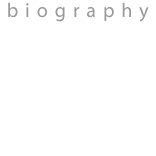Lehigh University AAD Faculty Exhibition - Spring 2010 As a young art student, I can recall my first visit to the first exhibition of work by the department faculty. I remember being confounded by the apparent disconnect that seemed to be prevalent in the work. These same professors who had profoundly influenced my development with heady intellectual dialogue and thoughtful critical analysis had by all appearances foregone all rational approaches in their own studio work. As an early proponent of craft and technical mastery as the pinnacle of fine art, I was perplexed by the sloppy abstraction and puzzling conceptual works that I encountered. As my own work began to evolve during my graduate studies, the philosophical nature of the work was challenged by my critics. I had been trained to be a good student, employing the suggestions of my instructors without question and striving for a conclusive product that, in my mind, represented a successful piece of art. With my “academic” approach to art-making under fire, I was charged with the task of uncovering what was at the very heart of my desire to create. As my search gravitated toward a more visceral approach to process, I had to abandon the intellectual and logical or at least allow those sensibilities to function in a more subconscious way. Essentially to progress artistically, we must forget what we already know and find fresh challenges in rediscovery. I think as a whole, the faculty in Art, Architecture and Design are unified in presenting the importance of process and creative discovery as the corner stone of our teaching philosophy, not just as a means to an end but as work of art in its own right. Although my foundation courses introduce a traditional approach to design theory, it is ultimately the first step in the creation of a unique and individual creative voice. The “constructive imagination” that we strive to develop in our students provides a means of problem solving that is not just limited to the studio. It is a philosophy that encompasses the importance of all experiences, for better or worse, and the lessons and growth they provide. It is through this trial and error that we develop our unique vision and the ability to approach creative problem solving in our own distinctly personal way. Students need to know that it is acceptable, and even imperative, to explore non-traditional ways to expand their creativity. It’s this spirit of invention that energizes the classroom for both student and instructor alike. The excitement of a creative revelation in the classroom frequently results in a burst of inspiration in my own studio. The improvisational work I create strives to capture the transcendence of a fleeting moment. It is the mystery of the unknown that thrills me in this process. As an instructor, it is equally thrilling to see students share the same wonder of discovery. The artist and teacher John Baldessari is quoted as saying that he prefers the term “younger artists” as opposed to students. By distinguishing our younger artists as peers, we welcome their insight and feed off of their passion. It is only our years of experience that separate us, as we share the same joys and frustrations in the creative process and continuously seek to find our own way by forging into the unknown. |
-Jason Travers
|


